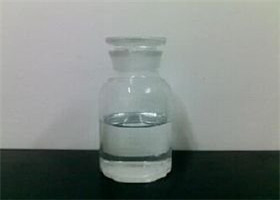

| Product name | γ-Butyrolactone |
| Alias | GBL/GHB ,Gamma Butyrolactone, 1, 4- Butyrolactone, γ -Butyroladone, BLO |
| CAS | 96-48-0 |
| MF | C4H6O2 |
| MW | 86.09 |
| Einecs | 202-509-5 |
| Purity | 99.5% |
| Melting Point | -44°C |
| Boiling Point | 206°C |
| Flash Point | 99.2°C |
| Ignition temperature | 455°C |
| Density | 1.12 g/mL at 25 ° C(lit. ) |
| Storage temp. | 2-8° C |
| Chemical Properties | Colorless clear oily liquid with acetone-like odor |
| Product Categories | Pharmaceutical Intermediates;Heterocycles;Miscellaneous Reagents |
| Usage | GBL can be used to produce a-pyrrolidone, 1-Methyl-2-pyrrolidinone , polyvinyl pyrrolidone, and α-Acetyl-γ-butyrolactone, And, GBL can be used as anaesthetic and tranquilizer, used to produce ciprofloxacin and interferon, as the intermediate of vitamin and rolicyprine; it's the intermediate of plant growth stimulator and insecticide. GBL is a good antioxidant, plasticizer, extractant, adsorbent, dispersant, fixative and curing agent; Moreover, it can also be used in battery, capacitor and development of color film. |
| M.S. |  |
γ-Butyrolactone (GBL) is a hygroscopic colorless liquid with a weak characteristic odor. Soluble in water, GBL is a common solvent and reagent in chemistry as well as being used as a flavouring, as a cleaning solvent, as a superglue remover, and as a solvent in some wet aluminium electrolytic capacitors. In humans it acts as a prodrug for γ-hydroxybutyric acid (GHB), and it is used as a recreational intoxicant with effects similar to alcohol.
A milliliter of pure GBL metabolizes to the equivalent 1.65g of NaGHB, the common form, so doses are measured in the single milliliter range, either taken all at once or sipped over the course of a night.
GBL is a lactone. It is hydrolyzed under basic conditions, for example in a sodium hydroxide solution into sodium gamma-hydroxybutyrate, the sodium salt of gamma-hydroxybutyric acid. Under acidic conditions it forms an equilibrium mixture of both compounds. These compounds then may go on to form a polymer. When treated with a non-nucleophilic base, like lithium diisopropylamide, GBL can become an alpha-carbon nucleophile. The related compound caprolactone can be used to make a polyester in this manner.
GBL is rapidly converted into GHB by paraoxonase (lactonase) enzymes, found in the blood. Animals which lack these enzymes exhibit no effect from GBL. GBL is more lipophilic (fat soluble) than GHB, and so is absorbed faster and has higher bioavailability. Because of these pharmacokinetic differences, GBL tends to be more potent and faster-acting than GHB, but has a shorter duration; whereas the related compound 1,4-butanediol (1,4-B) tends to be slightly less potent, slower to take effect but longer-acting than GHB.
butyrolactone;
Used as anaesthetic and tranquilizer, used to produce ciprofloxacin and interferon, as the intermediate of vitamin and rolicyprine;
As antioxidant, plasticizer, extractant, adsorbent, dispersant, fixative and curing agent;
Used in battery, capacitor and development of color film.
| Product name | γ-Butyrolactone | ||
| CAS | 96-48-0 | Outer Packing | 250KG |
| Production date | 2017-01-12 | Shelf life | 2 years |
| Standard adopted | EP | ||
|
Items of analysis
|
Specification
|
Results
|
|
| Appearance | Colorless or light yellow oily liquid | Conform | |
| γ-Butyrolactone | ≥99.5 | 99.84 | |
| Water,w/% | ≤0.05 | 0.019 | |
| Chroma | ≤20 | <10 | |
| Density | 1.125~1.135 | 1.125 | |
| Refractive index | 1.4350~1.4380 | 1.4370 | |
| Conclusion | Qualified | ||